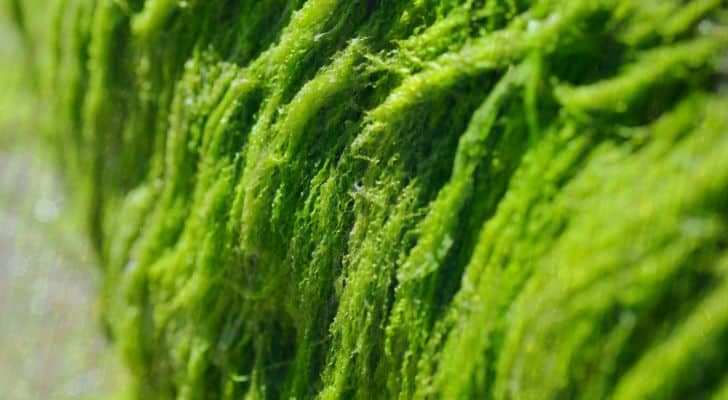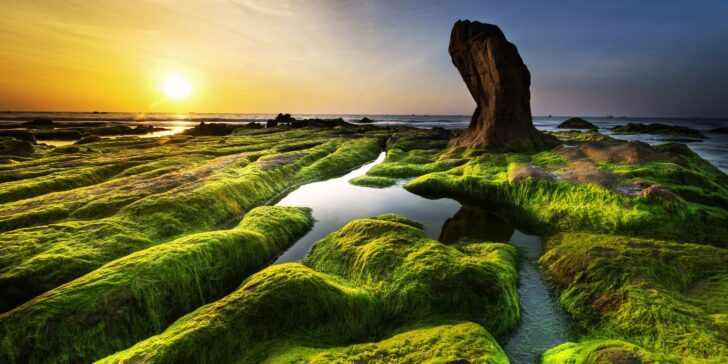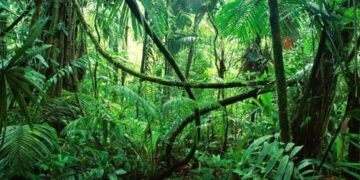Algae, often overlooked as nothing more than pond scum, are a crucial and captivating group of plant-like organisms found across the globe.
They come in various sizes, from tiny single cells to large multicellular forms, and play an important role in ecosystems.
Their ability to produce their own food through photosynthesis, much like plants on land, is just one of the interesting facts about their biology.
Here, we’ll explore some fascinating facts about algae, from their contribution to biofuel production to their role in keeping aquatic animals healthy!
Algae are a diverse group of photosynthetic organisms found in various environments, from oceans to freshwater environments and even snow.
Blue-green algae, also known as cyanobacteria, are not true algae but bacteria that photosynthesize like algae.
Red algae are better at absorbing blue light than other colors of algae. This helps them absorb light in deep water, where only blue light penetrates.
Brown algae include giant kelp, which can grow up to 215 feet (65 meters) long, making them some of the largest algae.
Algae play a crucial role in aquatic ecosystems as primary producers, forming the base of the food chain.
Through the process of photosynthesis, algae produce as much as 30 to 50 percent of the Earth’s oxygen levels.
Algae blooms, often visible as green, blue, or red layers on water, can drastically affect water quality and aquatic life.
Some harmful algal blooms release toxins that can endanger human health and marine life.
Algae are an important source of food for various aquatic organisms, including fish and shellfish.
Some species of algae can survive in harsh environments, such as icy waters, by secreting a certain protein that stops their cells from freezing.
Algae’s ability to grow quickly and in many types of water bodies makes them a potential source of biofuel.
Certain algae play a role in the wastewater treatment process by removing harmful chemicals, such as phosphorus and nitrogen, and by absorbing nutrients.
Algae are used in various industries, not just food and energy; they are also found in skincare products due to their anti-aging properties.
The word algae is the plural form of “alga,” which comes from Latin and means “seaweed.” Similarly, the study of algae is called phycology, after the Greek word “phykos,” which also means seaweed.
Algae are part of the kingdom Protista, which includes mostly single-celled organisms that are neither plants nor animals.
Coral reefs rely on a symbiotic relationship with algae, which provide the corals with food through photosynthesis. In return, the reefs provide much-needed shelter to the algae.
Algae are vital in studying plant-like organisms, helping scientists understand more about photosynthetic life forms.
Certain types of red algae, such as Cyanidiophyceae, are able to live in extremely inhospitable climates, like the highly acidic hot springs of Yellowstone National Park, in Wyoming.
Algae is one of the many diverse organisms that are included under the umbrella term “plankton,” along with bacteria, protozoa, and even microscopic fungi.
Algal oil, made from algae, is a great vegan alternative to fish oil, as it contains many omega-3 fatty acids.
Fish contain high amounts of essential omega-3 fatty acids because they eat microalgae.
In some cultures, algae is a staple food, prized for its nutritional content and versatility. A prime example is nori, the thin sheets of seaweed used in Japanese cuisine.
Algae’s role in climate change mitigation is studied for their ability to absorb carbon dioxide from the atmosphere.
Algae play a crucial role in lichen, a symbiotic organism composed of algae and fungi. The algae provide photosynthetic capabilities, while the fungi offer structure and protection.
Algae blooms are influenced by excessive nutrients in water, often due to runoff from agriculture and urban areas.
The different types of algae, such as red, green, and brown, are classified based on their chlorophyll pigments.
According to fossil records, oxygen-producing green algae is at least 1 billion years old.
There is no one common algae ancestor. Instead, algae are what’s considered a polyphyletic group, or a group of organisms that are grouped by their similarities instead of a shared evolutionary history.
Livestock feed often includes algae, which provide high levels of proteins and nutrients beneficial for animal health.
Understanding algae is essential for managing and conserving aquatic life and health, given their impact on ecosystems.
It’s believed by many scientists that without algae, there would be no life on Earth.
Scientists also believe that algae may be the reason we ever evolved in the first place, as oxygen-producing algae created our oxygen-rich atmosphere.
World Algae Day is celebrated annually on October 12 and showcases how essential algae is to our planet and its potential uses in creating sustainable food, fuel, and medicine.

Here, we’ve delved into the world of algae and discovered a wealth of fun facts about these incredible organisms.
From their vital role in oxygen production to their incredible diversity as a type of plant-like life, algae are truly remarkable.
They form the foundation of many food chains, aid in creating biofuels, and play a crucial part in wastewater treatment.


















